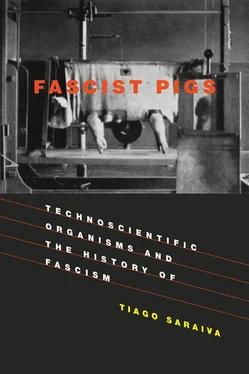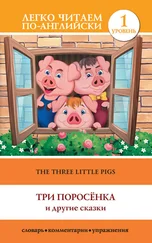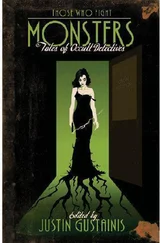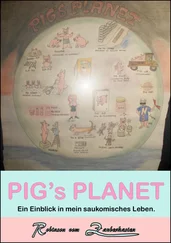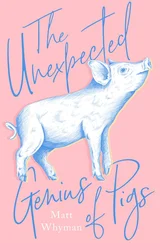But, once again, this complex propaganda structure that enabled the Fascist state to reach into the most remote spots of rural Italy was built on the promise of high yields that would be made possible by new strains of wheat. If some scientists, such as De Cillis, owed their reputations to their capacity for revealing the potential of the seeds by experimenting with cultivation techniques, others, such as Nazareno Strampelli (another member of the Permanent Wheat Committee), were hailed as the creators of the new strains. Strampelli was by far the most famous of the Italian wheat geneticists; he was known as Il Mago del Grano—the Grain Magician. [20]
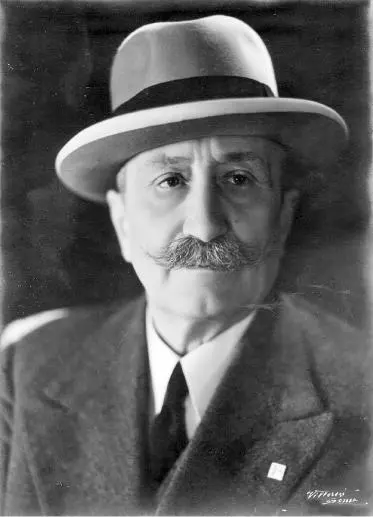
Figure 1.3 Nazareno Strampelli (1866–1942).
(Fondo Nazareno Strampelli, Rieti State Archives)
Producing and Circulating Purity
By the time Strampelli was mobilized for the Battle of Wheat, he was already an experienced scientist. In 1903 he had been hired as the local Experimental Chair of Grain Cultivation (Cattedra Sperimentale di Granicoltura) in Rieti, a small town of the Sabine region in central Italy. Although it seems quite a humble place to launch such a career, Rieti was renowned in Italy for its cereal production—especially for being the place of origin of the Rieti wheat variety. [21]This landrace was highly prized for its strong resistance to stem rusts, caused by the fungus Puccinia graminis , the most common of wheat diseases and well known among cereal growers for its potentially catastrophic effects. Rieti’s wide and fertile valley was a lake until the Romans drained it in the third century BC. Its cold winters and hot, humid summers offered ideal conditions for the development of the fungus. [22]The rust resistance of the local wheat evolved as a result of repeated annual exposure to the extreme environment.
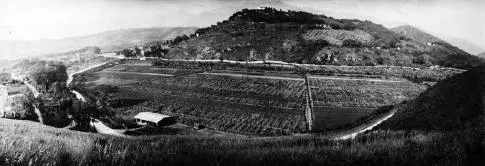
Figure 1.4 The Royal Experiment Station of Wheat Cultivation in Rieti, 1932.
(Nazareno Strampelli, “I Miei Lavori: origine e svilluppi—I grani della vittoria,” in Origini, Svillupi, Lavori e Risultati , Istituto Nazionale di Genetica per la Cerealicoltura, 1932)
For all its qualities, the Rieti strain was highly susceptible to lodging (the collapse of stems), a problem that grew with increasing soil fertility and plant height. At a moment when chemical fertilizers were the key to achieving record productivities, many traditionally successful varieties were being discarded due to lodging when cultivated in soils treated with phosphates and nitrates. Strampelli’s first works were typical agricultural studies directed to evaluating the effects on wheat yield of different land rotations or different qualities and quantities of fertilizers, but he soon initiated a breeding program to overcome the lodging behavior of the Rieti variety. His program was based on pedigree selection, a technique (made famous by the Vilmorin seed company) in which all descendants derive from a single individual, in contrast with the traditional practice of mass selection (gathering seeds from the best plants for planting in the next year). [23]
The use of pedigree selection had become a major tool for breeders at the turn of the century. Following the example provided by animal breeders and their studbooks, plant breeders made now use of detailed records identifying the genealogy of each individual plant cultivated in their plots. Through pedigree selection, breeders produced varieties selected for some important feature, such as pest resistance, early ripening, or good milling properties.
In 1903—the year Strampelli began his work in Rieti—the Danish botanist Wilhelm Johannsen published the results of his famous experiments with beans, drawing the distinction between genotype and phenotype. Whereas the Vilmorins and other breeders defined the stability of their lines of wheat by referring to repeated rounds of selection, Johannsen defined his “pure lines” of beans in Mendelian terms, as products of self-fertilization of homozygotic organisms. [24]Besides the theoretical breakthrough represented by Johannsen’s experiments, he seemed to have demonstrated the uselessness of making selections from pure lines constituted of genetically homogenous individuals. [25]These pure lines would become central in promises of standardizing agricultural practices, for their homozygosity guaranteed they would always react the same way in the same given environment. [26]They promised the end of the variable and unreliable world of traditional landraces, the local varieties used and produced by farmers, replacing it with a set of standardized genetic products with predictable fixed behavior. More than that, while landraces acquired properties (e.g., the Rieti strain’s resistance to rust) through Darwinian natural selection, the pure lines were produced by artificial selection—by breeders engineering nature.
Using pedigree selection, Strampelli followed two parallel strategies. He began planting several highly productive imported varieties of wheat in a rented experimental plot in the most humid area of the valley, hoping to select those able to resist its highly adverse conditions. At the same time, he made selections of the traditional Rieti variety with the aid of 28 local farmers aiming to identify a line that presented enhanced resistance to lodging. Both strategies failed: all the high-yield foreign wheats suffered severe attacks of rust, and no selection of the Rieti landrace had much resistance to lodging. [27]
Since selection was not enough, Strampelli complemented it with hybridization in order to combine characters from different varieties. Like the Vilmorins, Strampelli began his hybridization work before he had heard of the rediscovery of Mendel’s experiments by de Vries, Correns, and Tschermack. [28]Nevertheless, as early as 1905 he became acquainted with Mendel’s laws, which offered him a quantification of his own observations of disjunctions in the second generation. After that he would consider himself a devoted follower of the mythic founding father of genetics, and would even named one of his wheat strains Gregor Mendel . [29]He hybridized pure lines in order to combine Mendelian characters, after which he would make a selection of the offspring until he obtained again fixed pure lines. Strampelli definitely did not share Johannsen’s disgust for hybridization, and used both the typological approach of the pure line research programs, aimed at fixing the type, and the combinatory strategy of hybridizers. [30]
By 1907, as a first result of his hybridization work, Strampelli had produced a table of 22 antagonist characters (dominant/recessive) present in wheat: red spike / white spike; brittle root / sturdy root; multiple fiber strands / few fiber strands; rough leaves / smooth leaves; rust susceptibility / rust resistance, and so on. According to Strampelli’s table, two crucial properties, resistance to lodging and susceptibility to rust, behaved like Mendelian characters, prone to be combined and controlled at the geneticist’s will. It is reasonable to suppose that, as in the case of Johannsen, who talked of pure lines as chemical elements, Strampelli’s earlier work with soil chemistry contributed to his Promethean vision of creating new strains by combining hereditary elements as if they were chemical ones. [31]And, as Strampelli’s table shows, chemistry was not the only discipline he considered relevant. The physiological trait that served in his table as a proxy for resistance to lodging was the number of fiber strands present in the stem. It was the microscopic study of this property that allowed Strampelli to present his hybridization work as suitable for publication in the proceedings of the prestigious Accademia dei Lincei. [32]In other words, any good hybridizer should also be a proficient plant physiologist, familiar with the methods of analyzing a plant’s physiological properties, in order to consider the proper options when selecting offspring.
Читать дальше
